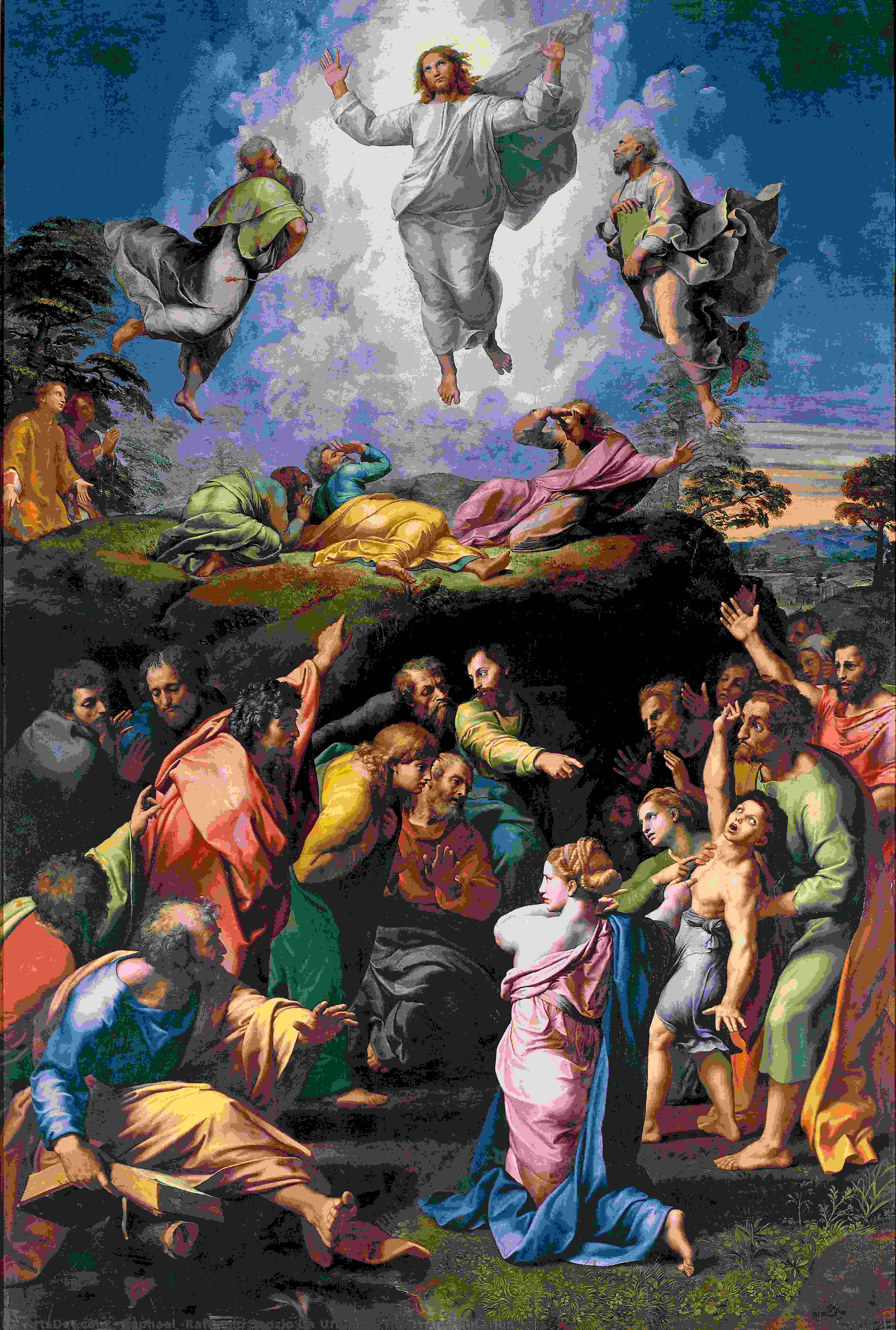Művész: Raphael (Raffaello Sanzio Da Urbino)
Stílus: Renaissance
témák: Characters
találka: 1520
múzeum: Vatican Museums and Galleries (Vatican City, Italy)
Technika: Oil
The Transfiguration is considered the last painting by the Italian High Renaissance master Raphael. It was left unfinished by Raphael, and is believed to have been completed by his pupil, Giulio Romano, shortly after Raphael's death in 1520. The picture is now housed in the Pinacoteca Vaticana of the Vatican Museum in the Vatican City. The composition is divided in two distinct parts, relating to successive episodes of the Gospel of Matthew. The upper part of the painting shows the Transfiguration itself (on Mount Tabor, according to tradition), with the transfigured Christ floating in front of softly illuminated clouds, between the prophets Moses and Elijah with whom he is discoursing as recorded in the account of Matthew. In the lower part, Raphael depicts the Apostles attempting, unsuccessfully, to free the possessed boy of his "demonic" possession. They are unable to cure the sick child until the arrival of the recently-transfigured Christ, who performs a miracle. Modern experts in Neurology and Epilepsy clearly identify the boy as suffering a seizure because of the typical eye deviation and posturing of the arms and head.
Művész |
|
|---|---|
Letöltés |
|
Engedélyek |
Szabad kereskedelmi célú felhasználásra. Lásd alább. |
Raphael (Raffaello Sanzio Da Urbino) – Legnézettebb műalkotások
|
This image (or other media file) is in the public domain because its copyright has expired. However - you may not use this image for commercial purposes and you may not alter the image or remove the watermark. This applies to the United States, Canada, the European Union and those countries with a copyright term of life of the author plus 70 years.
|

 Note that a few countries have copyright terms longer than 70 years: Mexico has 100 years, Colombia has 80 years, and Guatemala and Samoa have 75 years. This image may
not be in the public domain in these countries, which moreover do not implement the
Note that a few countries have copyright terms longer than 70 years: Mexico has 100 years, Colombia has 80 years, and Guatemala and Samoa have 75 years. This image may
not be in the public domain in these countries, which moreover do not implement the